 In the past, it was common for homework time at my house to end in tears, yelling, and occasionally, threats of world domination. Fortunately, we’ve all learned a few things since then and I’m here to tell you homework doesn’t have to be a fight. I’ve teamed up Lynnae Glascock, occupational therapist at QMG’s Behavioral Health Department, to tell you about the best strategies for taking the battle out of homework.
In the past, it was common for homework time at my house to end in tears, yelling, and occasionally, threats of world domination. Fortunately, we’ve all learned a few things since then and I’m here to tell you homework doesn’t have to be a fight. I’ve teamed up Lynnae Glascock, occupational therapist at QMG’s Behavioral Health Department, to tell you about the best strategies for taking the battle out of homework.
The Basics
A set time and place:
Like everything else with kids, routine and structure surrounding homework are important. Choose a well lit area that is free of clutter and noisy distractions. Choose a specific time each day so everyone knows what to expect. For example: after school, after snack, or after dinner, whatever works best for your household. I know that sometimes the best we can do is in the car, on the way to gymnastics, with younger sibling crying in the back seat. But when possible, a clean, quiet space is more conducive to effective learning.
Gather supplies ahead of time:
Keep paper, plenty of sharpened pencils, extra erasers, a ruler, and any other supplies you might need in a tote or drawer in your homework space so that you don’t end up having to work with a stubby, unsharpened pencil that someone chewed the eraser off of weeks ago.
Meet basic needs:
Before starting homework, make sure your child (and you!) have had a snack, something to drink, and a bathroom break. It’s easier to focus when our basic needs are met.
Stay Calm:
Helping your child with homework when you’re agitated or upset is counterproductive. Take a minute for yourself, ask your partner to cover homework duty for a few minutes (years if he or she is super supportive), or try again later. Meltdowns are more likely if you respond to your child’s frustration with your own.
Work before play:
Implement a policy of work before play. If video games or the Wi-Fi password aren’t available until homework and chores are done, kids will be more motivated.
Give choices:
Let kids make choices and be in control where possible: “What do you want to start with?” and “How long do you think these problems will take to do?” Lots of control over the small stuff makes it easier for kids to leave control over the big stuff to the adults.
Do homework even when you don’t have homework:
Maintain the homework routine by having them read or practice with flashcards on nights they don’t bring anything home.
Take breaks:
When kids get restless, frustrated, or just bored with their homework, have them take a 3-5 minute sensory break. Jumping jacks, animal walks around the table, simple yoga poses, or a quick game of Simon Says are all good options. Lynnae says a 3-5 minute break every 30-60 minutes during school-related tasks improves focus and reduces frustration by meeting the child’s sensory needs.
Visual Timers:
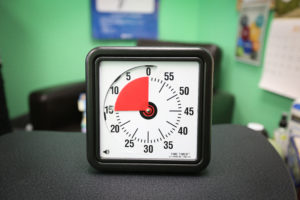 Use visual timers, such as the Time Timer, to help kids better understand time frames. If they need to read for 15 minutes, just set the timer and tell them “when the red is gone, you’re done.” There are visual timer apps for iPhone and Android and Time Timers are available online at www.timetimer.com and www.amazon.com. Quick tip:Treat it like that magical little (pain in the butt) Elf on the Shelf. Only adults can set the timer; if kids touch it, the magic disappears!
Use visual timers, such as the Time Timer, to help kids better understand time frames. If they need to read for 15 minutes, just set the timer and tell them “when the red is gone, you’re done.” There are visual timer apps for iPhone and Android and Time Timers are available online at www.timetimer.com and www.amazon.com. Quick tip:Treat it like that magical little (pain in the butt) Elf on the Shelf. Only adults can set the timer; if kids touch it, the magic disappears!
Specific Tips for Specific Problems
Homework can be a struggle for any kid at any age, but for young children with learning issues, sensory processing disorder, ADHD, anxiety, or visual processing issues it can be even harder to complete homework assignments. Visual processing is the way your brain perceives visual information. Children with problems in this area can lose their place frequently while reading, reverse letters and numbers, or might have poor hand-eye coordination. Here are some tips for kids who face additional homework challenges.
Checklists:
Adults use post-it notes and to-do lists to keep track of what they need to do and these can be very helpful for kids during homework too. Help them make a simple list and check off items as they complete them. Seeing their progress is rewarding. It’s important that kids be motivated by a sense of accomplishment rather than tangible rewards like prizes or treats.
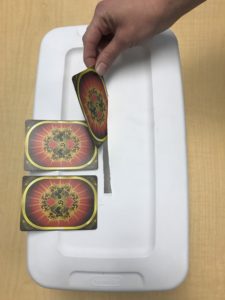 A task box is a type of visual to-do list for kids. They can see what they have to do and can count down to being done. Get a shoebox or another container you have lying around the house and make a hole in the lid. Find small items from around the house that you have multiples of such as playing cards, coins, or paper clips. For example, if he or she has 3 worksheets to do, put three items on top of or next to the box. As your child completes a page, an item goes in the box. Out of sight, out of mind!
A task box is a type of visual to-do list for kids. They can see what they have to do and can count down to being done. Get a shoebox or another container you have lying around the house and make a hole in the lid. Find small items from around the house that you have multiples of such as playing cards, coins, or paper clips. For example, if he or she has 3 worksheets to do, put three items on top of or next to the box. As your child completes a page, an item goes in the box. Out of sight, out of mind!
Reducing what is visible:
Math worksheets can be cut into strips so that kids are only seeing one line of problems at a time. Once that strip is complete, move it out of view. The unfinished portions are kept out of sight as well. This way there are fewer visual distractions so the work may be less overwhelming and more manageable.

![]()
Too many graphics on worksheets that aren’t related to the task at hand can be confusing to kids. Cut off or cover up pictures or clip art that doesn’t help with the problem or task.
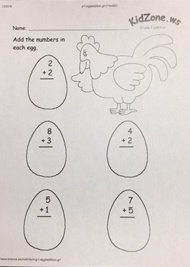
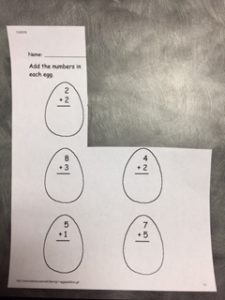
Create a cut-out window so that only one problem is visible at a time.

If-then schedule:
An if-then visual schedule helps a child to make the connection that if they complete their homework, then they can play or do something else they enjoy. Use pictures for younger children, pictures and words for older kids.
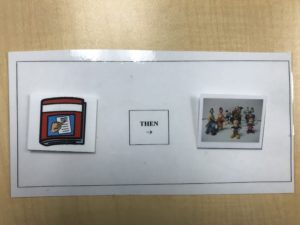
These are just a few of the tools that Lynnae uses to help kiddos overcome educational challenges. If your child is having a hard time with homework, start with the basics and then introduce some of the visual strategies as needed. Should problems persist, contact your child’s teacher to discuss your concerns.
In the meantime, BREATHE. You–and your child–can do this.
Until next week,
Nikki
*The content in this blog should never be considered an alternative to quality medical or mental health care and is intended to be a source of information only.

